Evidence of water ice at Mars's equator has been detected by the Mars Express spacecraft currently in orbit around the planet.
Data from the European Space Agency probe suggests layers of water ice at the equator may stretch several kilometres below the Martian surface.
The presumed Mars water ice deposits are so expansive they could, if melted, cover the entire Red Planet in a layer of water 1.5 - 2.7m deep.
Find out why astronomers are searching for water beyond Earth and where we find water in space.
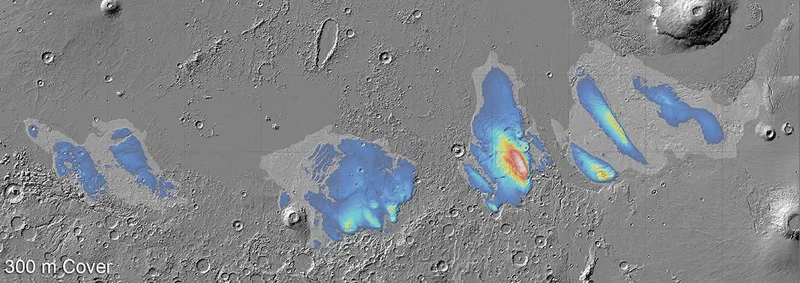
While water ice is known to exist at Mars's polar caps, this latest data, if confirmed, would indicate masses of water ice at the equator.
The discovery was made using Mars Express's Mars Advanced Radar for Subsurface and Ionospheric Sounding (MARSIS) instrument, which uses radio waves to map Mars's sub surface.
Discovering the water ice on Mars
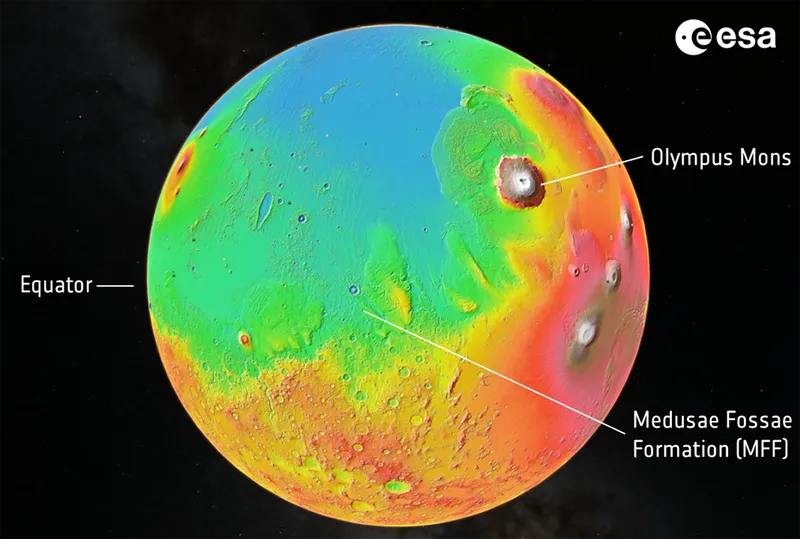
The water ice is contained within a feature on Mars called the Medusae Fossae Formation, which is located at the boundary between Mars’s highlands and lowlands.
The MFF is a series of wind-sculpted features measuring hundreds of kilometres across and several kilometres high.
Mars Express studied the Medusae Fossae Formation in 2007 and found deposits of material up to 2.5km deep, but at that time it was unclear exactly what the deposits were made of.
However, data showed that the formation was relatively transparent to radar and low in density, which would be consistent with water ice.
Yet at the time, scientists couldn't rule out the possibility the deposits were dust, volcanic ash or sediment.
This latest data from Mars Express suggests the deposits are layers of dust and ice, covered with a layer of dry dust or ash several hundred metres thick.
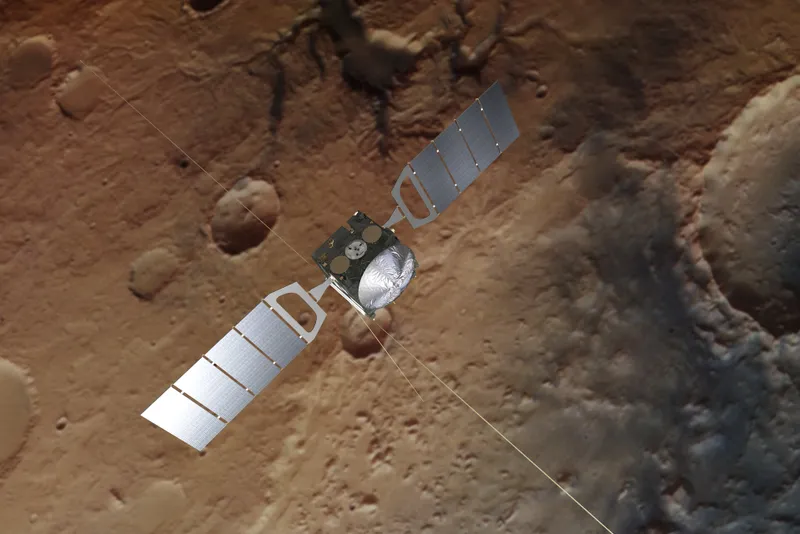
“We’ve explored the MFF again using newer data from Mars Express’s MARSIS radar, and found the deposits to be even thicker than we thought: up to 3.7 km thick,” says Thomas Watters of the Smithsonian Institution, lead author of the new research and the 2007 study.
“Excitingly, the radar signals match what we’d expect to see from layered ice, and are similar to the signals we see from Mars’s polar caps, which we know to be very ice rich.”
“Given how deep it is, if the MFF was simply a giant pile of dust, we’d expect it to become compacted under its own weight,” says co-author Andrea Cicchetti of the National Institute for Astrophysics, Italy.
“This would create something far denser than what we actually see with MARSIS. And when we modelled how different ice-free materials would behave, nothing reproduced the properties of the MFF – we need ice.”
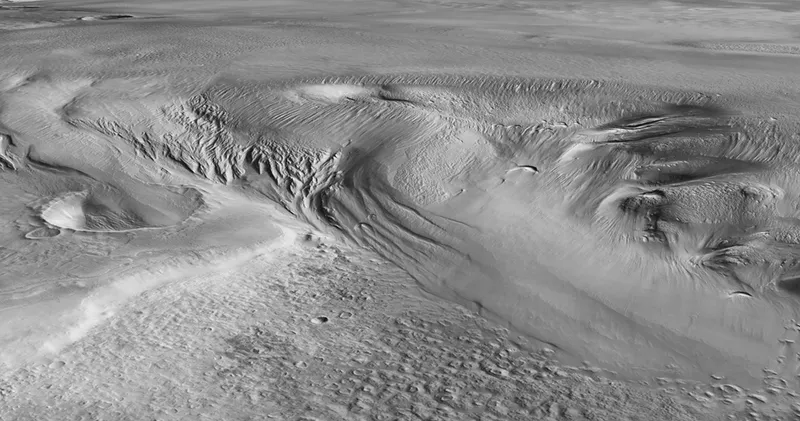
A brief history of water ice on Mars
Today Mars is a dry, arid, inhospitable world, but exploratory missions over the past few decades have discovered the planet was likely much warmer and wetter in its ancient history.
There are signs today of dried up ancient river channels, oceans, Martian lake beds and water-carved valleys.
And, of course, there are those polar caps that can be clearly seen in images of the Red Planet.
Huge deposits of water ice near the equator, like those potentially found in this new Mars Express data, must have formed during Mars's ancient past.
“This latest analysis challenges our understanding of the Medusae Fossae Formation, and raises as many questions as answers,” says Colin Wilson, ESA project scientist for Mars Express and the ESA ExoMars Trace Gas Orbiter.
“How long ago did these ice deposits form, and what was Mars like at that time? If confirmed to be water ice, these massive deposits would change our understanding of Mars climate history. Any reservoir of ancient water would be a fascinating target for human or robotic exploration."
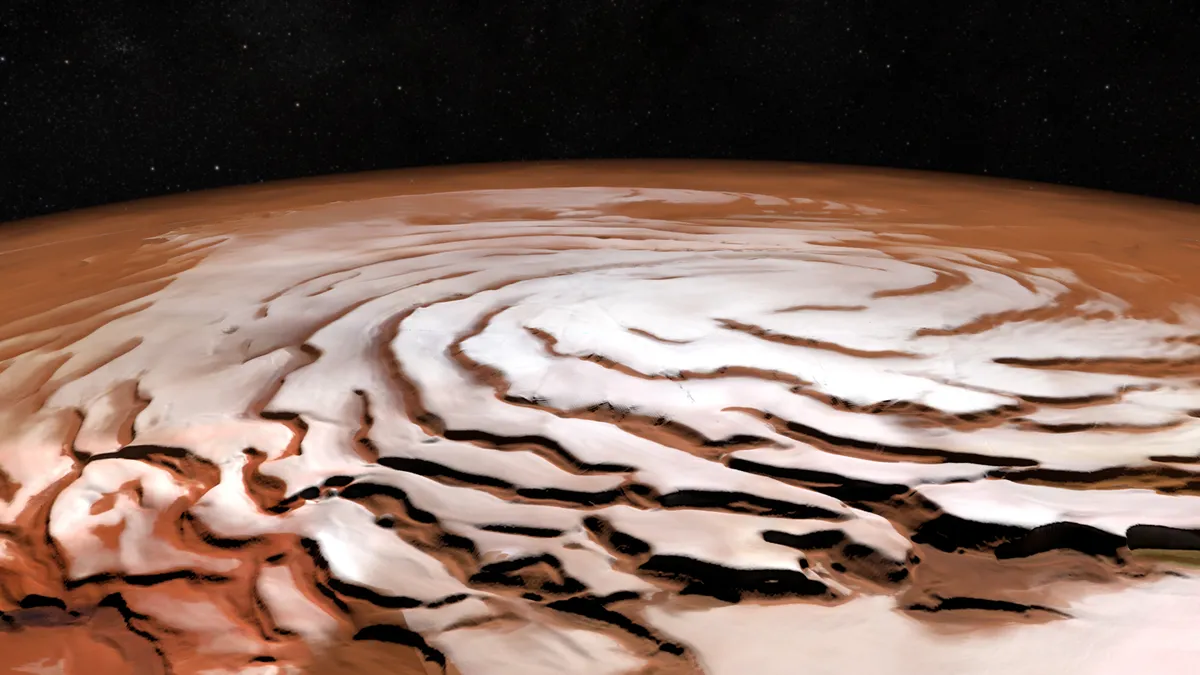
Could humans access the ice?
Given NASA's Artemis programme to put humans on the Moon and eventually Mars, discoveries of water ice on the Red Planet suggest future explorers could harvest that ice and put it to use.
Water ice on the Moon is already considered a potential resource for permanent human settlements, as it could be used as drinking water, for growing crops, or even for breaking down into breathable oxygen or rocket fuel.
The same could be said for water ice on Mars.
Future missions to the Red Planet would need to land near the equator, far from the icy polar caps and towering glaciers, so a water resource at Mars's equator has the potential to be a valuable resource.
"Unfortunately, these MFF deposits are covered by hundreds of metres of dust, making them inaccessible for at least the next few decades," says Wilson.
"However, every bit of ice we find helps us build a better picture of where Mars’s water has flowed before, and where it can be found today."
This article is based on the results of the paper ‘Evidence of Ice-Rich Layered Deposits in the Medusae Fossae Formation of Mars’ by T. R. Watters et al., published in the journal Geophysical Research Letters.

